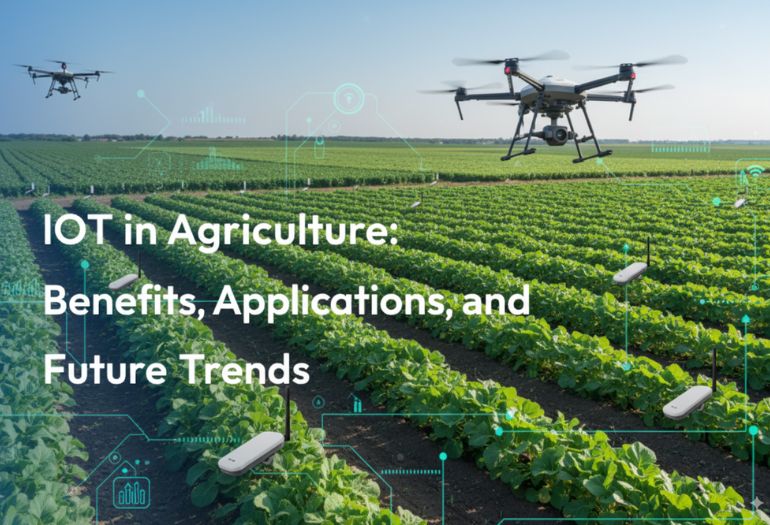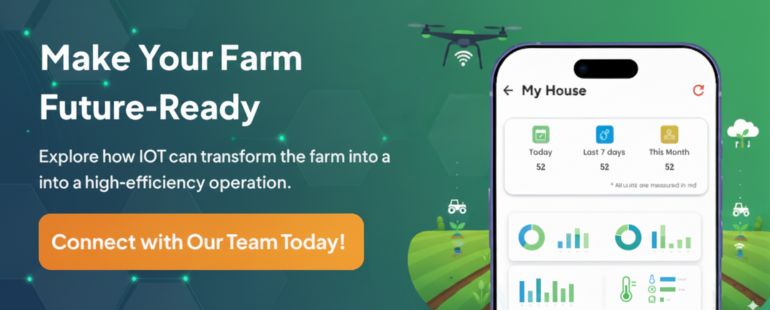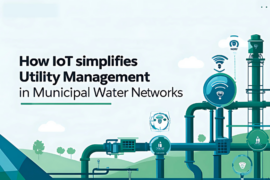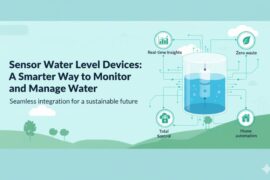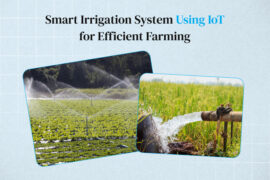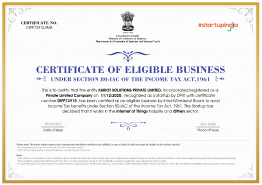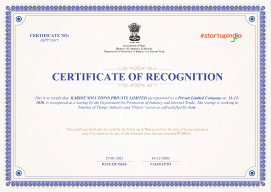Agriculture is undergoing a massive transformation. The rising global population, shrinking natural resources, and unpredictable climate conditions are forcing farmers to move beyond traditional practices. Traditional farming methods, although time-tested, are often labor-intensive, resource-heavy, and inefficient challenges that make it harder to meet future food demand sustainably.
Enter the Internet of Things (IoT) , a network of smart, connected devices that collect and share real-time data to automate processes, optimize resources, and guide decision-making. With IoT, farms are no longer just plots of land they’re becoming data-driven ecosystems that can predict, adapt, and thrive through smart water management using IoT, automated systems, and advanced analytics.
What is IoT in Agriculture?
IoT refers to interconnected devices that communicate with each other and central systems to provide actionable insights. In agriculture, these devices monitor crops, soil, water, machinery, and livestock to give farmers a 360-degree view of their operations. This IoT in agriculture network spans from field sensors to cloud-based platforms.
IoT gateways act as hubs that integrate multiple sensors, drones, and farm management platforms, creating a unified system. For example:
- Temperature and humidity sensors warn farmers of extreme weather events.
- Soil moisture sensors guide irrigation schedules with precision.
- GPS-enabled collars track livestock health and movement.
This connectivity turns farming from a reactive process into a predictive science, enabling farmers to make decisions faster and with better data. The global IoT agriculture market driven by IoT device management platforms, smart water meters, and remote monitoring is projected to reach USD 30 billion by 2030 at a CAGR of over 10%.

Benefits of IoT in Agriculture
1. Improved Crop Yield
IoT device monitoring systems help detect early signs of plant stress, pest infestations, or nutrient deficiencies. Data-driven interventions ensure healthier crops, higher yields, and lower losses. In Europe, IoT-enabled vineyards report improved grape quality and reduced water usage by 15–25%.
2. Efficient Water Management
Water is agriculture’s lifeblood, but also its biggest vulnerability. Smart irrigation systems using IoT sensors can reduce water usage by up to 40% while maintaining ideal soil moisture. Farmers receive real-time data on how much water each section of the farm actually needs, preventing waste and lowering costs.
3. Cost Reduction & Resource Optimization
IoT reduces manual labor and optimizes resource inputs. By automating fertilizer application and IoT tank level monitoring of storage, farmers save on energy, fuel, and chemicals improving both profitability and sustainability.
4. Enhanced Sustainability and Traceability
With growing consumer demand for sustainable food, IoT offers detailed traceability from farm to fork. Combined with blockchain, farmers can prove their environmental footprint and boost buyer confidence in organic or export-oriented produce.
Key Applications of IoT in Agriculture
Smart Irrigation Systems
Smart irrigation system using IoT uses sensors to measure soil moisture, weather conditions, and crop requirements. These systems automatically supply the right amount of water at the right time, improving water efficiency and ensuring healthy crops. Farmers can also analyze historical irrigation data to refine future strategies, reducing both water and operational costs.
Remote Monitoring and Automation
With IoT remote monitoring solutions, farmers can supervise farm operations from anywhere. Sensors measure soil quality, temperature, humidity, and crop health, transmitting real-time data to management platforms. Alerts notify farmers about anomalies, such as low soil moisture or unusual temperature fluctuations, allowing prompt intervention and reduced labor requirements.
Livestock Management
IoT devices improve livestock care by tracking health, location, and environmental conditions. Sensors can monitor feeding patterns, detect illness, and prevent the spread of disease. This level of monitoring ensures healthier livestock, higher productivity, and reduced labor for routine checks.
Industrial IoT for Large-Scale Farms
Large-scale farms benefit from industrial IoT, which integrates multiple systems into a single platform for centralized management. Managers can monitor vast fields, machinery, and resources efficiently. Real-time data analysis improves decision-making and ensures consistent farm operations at scale.
Lesser-Known and Unique IoT Applications
Microclimate Monitoring
IoT sensors can track temperature, humidity, and light at a very localized level, creating microclimate maps for precision farming. This helps farmers optimize planting and irrigation schedules and prevent crop stress caused by localized environmental fluctuations.
Precision Fertilization
IoT devices can measure soil nutrient levels, including nitrogen, phosphorus, and potassium, in real-time. This allows farmers to apply fertilizers precisely, reducing chemical usage and improving soil health.
Automated Pollination Management
Sensors track flowering stages and pollinator activity. Automated or robotic pollination can then be deployed at optimal times, ensuring better fruit yield without relying entirely on human labor.
Weed Detection and Removal
IoT cameras with AI can identify weeds among crops. Robotic systems can then remove weeds mechanically, reducing herbicide use and labor costs.
Soil Microbial Health Monitoring
Sensors can measure microbial activity in soil, which is critical for nutrient cycling. Insights from this data help optimize bio-fertilizer application and crop rotation.
Smart Storage and Post-Harvest Monitoring
IoT-enabled storage silos monitor temperature, humidity, and spoilage risks, ensuring crop quality is maintained after harvest. This reduces post-harvest losses and increases profitability.
Climate Resilience
IoT sensors detect drought stress, flood risks, or sudden temperature spikes. Early alerts allow farmers to take preventive actions, safeguarding crops against climate-related risks.
Comparison Table: Key IoT Solutions in Agriculture
This table offers a concise view of how different IoT applications help optimize farm prductivity and efficiency.
Data Management and Analytics
One of the most transformative aspects of IoT in agriculture is the ability to leverage data. Sensors collect vast amounts of information on soil quality, crop growth, weather conditions, and machinery performance. Using IoT device management platforms, this data is analyzed to uncover trends, predict challenges, and inform decision-making.
For example, predictive analytics can forecast irrigation needs, detect early signs of disease, or optimize harvesting schedules. By converting raw data into actionable insights, farmers make smarter decisions that enhance efficiency, reduce waste, and increase profitability.
Sustainability and Environmental Impact
Sustainable farming is increasingly important, and IoT supports environmentally responsible practices. Through smart water meters, farms can track consumption and reduce unnecessary usage. Automated irrigation systems prevent overwatering, which not only conserves water but also minimizes soil erosion and nutrient runoff.
By using data-driven insights, farmers can reduce fertilizer and energy usage, contributing to lower greenhouse gas emissions. IoT solutions thus align economic benefits with environmental responsibility, promoting long-term sustainability in agriculture.
Integration with Other Technologies
IoT doesn’t work alone; it thrives in an ecosystem of advanced technologies:
- Drones & Satellites: Provide aerial imagery for crop health analysis, pest detection, and irrigation mapping.
- Edge Computing: Processes data locally for instant decision-making critical for real-time irrigation or pest control.
- Blockchain: Creates secure, tamper-proof records of crop journeys from farm to market.
AI & Predictive Analytics: Forecast yield outcomes, detect diseases, and automate farm tasks proactively.
This convergence turns farms into hyper-automated ecosystems capable of self-adjusting irrigation, nutrient delivery, and pest control with minimal human intervention.
Government Initiatives Supporting IoT
Around the world, governments are funding IoT adoption in agriculture:
- India: Digital Agriculture Mission 2021–2025 promotes IoT, AI, and blockchain for precision farming.
- EU: Common Agricultural Policy (CAP) funds smart farming technologies.
- U.S.: USDA supports IoT-based climate-smart agriculture projects.
Such initiatives help small and medium farmers overcome cost barriers and access training.
Challenges and Limitations
Despite its benefits, adopting IoT in agriculture presents challenges. Connectivity issues in remote areas can limit the effectiveness of IoT systems. The cost of devices and infrastructure can be a barrier for small-scale farmers. Managing multiple devices also requires specialized knowledge in industrial IoT applications and cybersecurity.
Training and support are essential for farmers to maximize the benefits of IoT technology. Phased implementation and scalable systems help overcome these challenges, ensuring farms gain long-term efficiency without excessive upfront costs.
Case Studies and Real-World Examples
Several farms worldwide are already benefiting from IoT. For instance, vineyards in Europe use IoT remote monitoring solutions to track soil moisture and weather conditions, resulting in higher-quality grapes and reduced water usage. Similarly, rice farms in Asia employ smart irrigation systems using IoT to maintain precise water levels, increasing yield while conserving resources.
These examples demonstrate that adopting IoT technology can be practical, scalable, and impactful across different types of agriculture.
Future Trends in IoT Agriculture
The future of IoT in agriculture is moving beyond basic sensor deployment into a fully interconnected, autonomous farming ecosystem. Several emerging technologies will shape this evolution over the next decade:
1. Predictive Analytics and AI Integration
The next wave of IoT will not just collect data but interpret it intelligently. By combining sensor data with AI and machine learning, farms can forecast yield, anticipate pest infestations before they spread, and even predict market demand.
- Example: Platforms such as Microsoft’s FarmBeats and IBM’s Watson Decision Platform are already delivering AI-driven recommendations based on satellite imagery, weather forecasts, and soil data.
- Impact: This reduces guesswork, allowing farmers to shift from reactive to proactive and prescriptive farming.
2. Drone-Based Monitoring and Autonomous Robots
Drones equipped with hyperspectral cameras can map plant health, detect water stress, and spot early disease outbreaks. Autonomous robots will soon handle targeted spraying, precision weeding, and even robotic harvesting.
- Example: In the U.S., farms are deploying swarms of drones to scout large fields in a fraction of the time it takes human workers.
- Trend: Expect drones to be integrated with ground sensors so real-time aerial data automatically triggers ground-based actions such as irrigation or fertilization.
3. Energy-Efficient and Low-Cost IoT Devices
Traditional IoT sensors required frequent maintenance and battery changes. New low-power wide-area networks (LPWANs) such as LoRaWAN and NB-IoT allow devices to run for years on a single battery, reducing costs and enabling coverage in remote areas.
- Outcome: Small and mid-sized farmers will be able to afford advanced monitoring systems previously only viable for large operations.
4. Real-Time Autonomous Control
Future systems will not only detect conditions but act automatically adjusting irrigation, releasing beneficial insects, or deploying drones without human intervention. Greenhouses and open fields will operate like self-regulating ecosystems, reacting instantly to data.
- Example: Some European tomato farms already use IoT-linked climate control systems that adjust temperature, humidity, and CO₂ levels automatically to optimize yield.
5. Integration with Blockchain and Supply Chains
As consumers demand transparency, IoT will feed data directly into blockchain systems for tamper-proof traceability from seed to shelf. Retailers will be able to verify the authenticity of organic produce or sustainable practices in real time.
6. Global Expansion and Smart Villages
Governments are funding “smart village” initiatives where rural communities get IoT infrastructure, edge computing hubs, and training. This democratizes smart farming, closing the gap between large agribusinesses and smallholders.
7. Toward Hyper-Automated Farms by 2030
By 2030, many farms are expected to be hyper-automated, with AI making planting and harvesting decisions, IoT sensors monitoring every variable, and autonomous equipment executing tasks. Farmers will shift from hands-on labor to data-driven farm management.
Projected IoT Adoption in Agriculture by 2030
This projection highlights a steady rise in IoT adoption, underscoring its growing importance in creating data-driven, high-efficiency farms of the future.
Conclusion
IoT is no longer a futuristic concept, it’s a present-day reality transforming agriculture. From smart irrigation systems and livestock monitoring to blockchain-based traceability and drone-assisted field analysis, IoT empowers farmers to make informed, efficient, and sustainable decisions.
As devices become more affordable and interconnected, both large-scale and smallholder farms can benefit from this technology. With IoT, the agriculture sector can meet global food demands while conserving resources and reducing environmental impact.
The future of farming lies in connectivity, intelligence, and resilience. IoT in agriculture is not just a technology but a strategic shift toward creating a productive, sustainable, and future-ready agricultural ecosystem.

